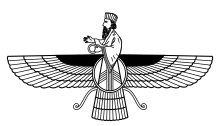
Back Medicina de l'antic Iran Catalan Antigua medicina irania Spanish طب ایران باستان Persian Médecine dans la Perse antique French Kedokteran Iran kuno ID Medicina iraniană veche Romanian

The practice and study of medicine in Persia has a long and prolific history.[1] The Iranian academic centers like Gundeshapur University (3rd century AD) were a breeding ground for the union among great scientists from different civilizations.[2][3] These centers successfully followed their predecessors’ theories and greatly extended their scientific research through history. Persians were the first establishers of modern hospital system.[4][5]
In recent years, some experimental studies have indeed evaluated medieval Iranian medical remedies using modern scientific methods. These studies raised the possibility of revival of traditional treatments on the basis of evidence-based medicine.[6]
- ^ Pourahmad, J. (2010-11-20). "History of Medical Sciences in Iran". Iranian Journal of Pharmaceutical Research. 7 (2): 93–99. doi:10.22037/ijpr.2010.750. ISSN 1735-0328.
- ^ Behrouz R, Ourmazdi M, Reza'i P. Iran—The cradle of science. 21st ed., Iran Almanac, 1993, p. 115–8.
- ^ 2. M. Meyerhof, Science and medicine. In: T. Arnold and A. Guillaume, Editors, The legacy of islam, Oxford University Press, London (1952), pp. 314–315.
- ^ Cyril Elgood (1951). A Medical History of Persia and the Eastern Caliphate. London: Cambridge University Press. doi:10.1017/CBO9780511710766. ISBN 9780511710766.
- ^ Mohammadali M. Shoja, R. Shane Tubbs (2007). "The history of anatomy in Persia". Journal of Anatomy. 210 (4): 359–378. doi:10.1111/j.1469-7580.2007.00711.x. PMC 2100290. PMID 17428200.
- ^ A. Gorji et al. History of epilepsy in Medieval Iranian medicine. Neurosci-Biobehav-Rev. 2001 Jul; 25(5): 455-61
© MMXXIII Rich X Search. We shall prevail. All rights reserved. Rich X Search